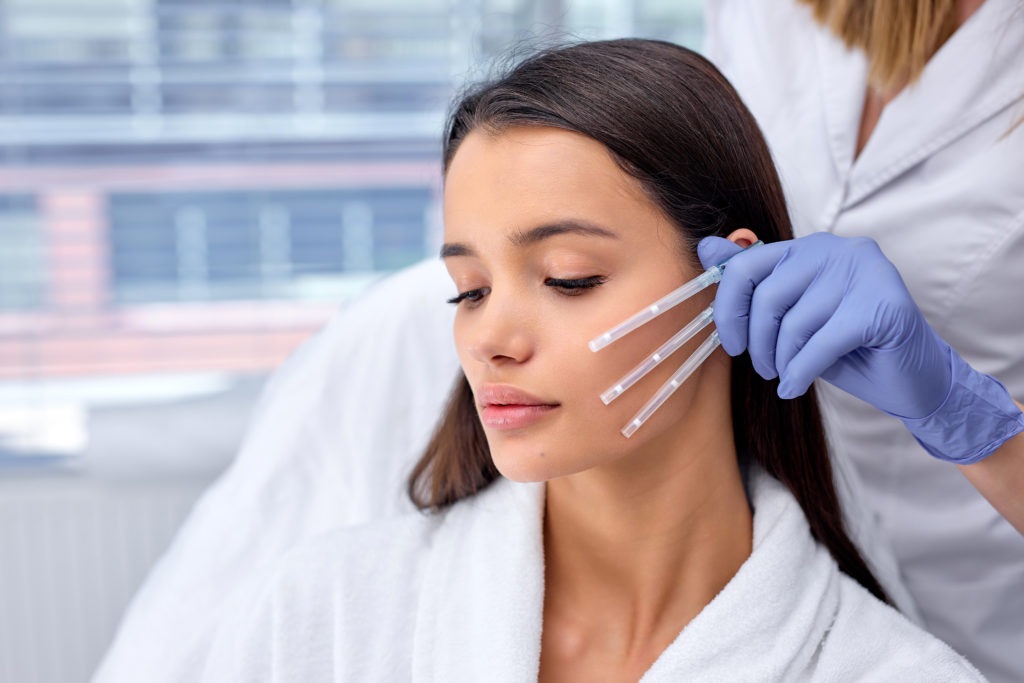Introduction:
PDO (Polydioxanone) threads have become increasingly popular as a non-surgical treatment for skin tightening and lifting. While PDO threads offer numerous benefits, it’s essential to understand their safety and potential risks, particularly for different skin types. In this blog post, we will explore the safety of PDO threads for various skin types, discuss potential risks, and address frequently asked questions (FAQs) related to PDO thread treatments.
Understanding PDO Threads:
PDO threads are biocompatible sutures made of a dissolvable material called polydioxanone. These threads are inserted into the skin to stimulate collagen production, resulting in improved skin tightness and lift. PDO threads can effectively address sagging skin, wrinkles, and other signs of aging.
Are PDO Threads Safe for All Skin Types?
PDO threads are generally considered safe for all skin types. However, certain factors should be taken into consideration:
1. Skin Sensitivity: Individuals with sensitive skin may have a higher risk of experiencing adverse reactions to PDO threads. It’s crucial to inform your practitioner about any known skin sensitivities or allergies during the consultation.
2. Skin Thickness: The thickness of the skin can influence the effectiveness of PDO thread treatments. Thicker skin may require a different technique or type of thread compared to thinner skin. Your practitioner will assess your skin type and choose the most appropriate approach for your specific needs.
3. Skin Conditions: Certain skin conditions, such as active acne, infections, or open wounds, may affect the suitability of PDO thread treatment. It’s important to have a thorough discussion with your practitioner about any pre-existing skin conditions or ongoing treatments to ensure the safety and efficacy of the procedure.
Potential Risks and Complications:
While PDO thread treatments are generally safe, it’s important to be aware of potential risks and complications:
1. Bruising and Swelling: Some degree of bruising and swelling is common after PDO thread insertion. These side effects are usually temporary and subside within a few days to a week.
2. Infection: Like any procedure involving the skin, there is a risk of infection. Following proper aftercare instructions provided by your practitioner is crucial to minimize this risk.
3. Thread Migration or Extrusion: In rare cases, PDO threads may migrate or become visible under the skin’s surface. This can result in irregularities or discomfort. Choosing an experienced and skilled cosmetic practitioner can help reduce the likelihood of these complications.
4. Allergic Reactions: While allergic reactions to PDO threads are rare, individuals with known allergies to the suture material or similar substances should inform their practitioner.
FAQs – PDO Thread Treatments:
1: What is the recovery process like after PDO thread treatment?
The recovery process is typically minimal. You may experience some swelling and bruising, but these effects usually subside within a few days. Your practitioner will provide post-treatment care instructions to optimize healing.
2: How long do PDO thread results last?
PDO thread results can vary depending on individual factors, such as metabolism and lifestyle. On average, the effects can last from six months to over a year. Maintenance treatments may be required to sustain the desired results.
3: Are PDO thread treatments painful?
PDO thread treatments are usually well-tolerated. Your practitioner may apply a topical anesthetic or use threads with built-in anesthetic properties to minimize discomfort during the procedure.
4: Can PDO threads be combined with other treatments?
Yes, PDO threads can be combined with other cosmetic treatments such as dermal fillers or botulinum toxin injections to achieve more comprehensive results. Your practitioner will evaluate your specific needs and recommend suitable combinations.
5: How soon will I see results from PDO thread treatments?
Results from PDO thread treatments are typically noticeable immediately after the procedure. However, it’s important to note that the full effects may take a few weeks as the threads stimulate collagen production and the skin adjusts.
Conclusion:
PDO threads are generally safe for all skin types when performed by a qualified and experienced practitioner. Understanding the potential risks, considering individual factors, and following proper aftercare instructions are essential for a successful outcome. By addressing frequently asked questions and having open communication with your practitioner, you can make informed decisions and enjoy the potential benefits of PDO thread treatments for skin tightening and lifting.




